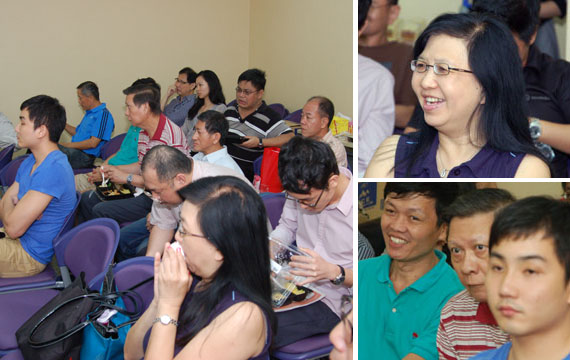
Photos by Sim Kih
Q&M DENTAL is the only listed dental practice in Singapore and in the region. It is also the largest private dental practice in Singapore and is way ahead of the next competitor, the government polyclinics.
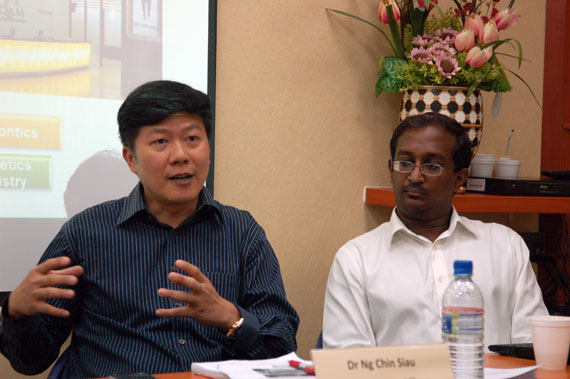
Its CEO, Dr Ng Chin Siau, and his senior management spent 2 hours last Saturday with over 20 NextInsight readers (including a reporter from The Edge Singapore) at the Q&M dental centre in City Square Mall in Kitchener Road.
Key takeaways from the discussion:
1. Growing revenue: Q&M Dental has consistently grown its revenue -- from $26.4 million in 2007 to $47.8 million last year.
There is more to come -- as it increases its dental outlets organically (ie, buy or rent premises and set up the dental infrastructure), acquire existing dental practices, launch corporate programmes and target tourists.
From 51 now, the target is to have 60 outlets in Singapore by 2015. In Malaysia, the target is to grow from 3 currently to 15 by 2015.
The main growth driver is China, where Q&M plans to invest RMB 400 million to have 50 dental clinics and 20 laboratories by 2015 through joint ventures mainly and, partly, its own Q&M dental clinics in Shanghai.
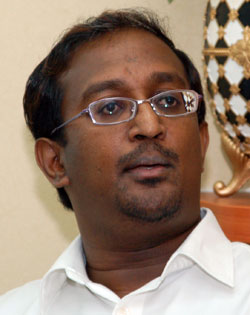
2. Vertical integration: A little-known aspect of Q&M is its vertical integration: It owns dental laboratories and two distributors of dental supplies and equipment -- this translates into cost savings and economies of scale.
It even has its Q&M Dental Institute to train its dentists and nurses -- and those from its joint venture partners - in procedures and the use of new equipment, educate them on issues relating to law and ethics, and customer service.
3. Market dominance: Q&M has 8-9% of clinics and 10% of dentists in Singapore -- but it is the dental practice to go to for 17% of the population who visit dentists at least once a year.
And it offers the full range of dental services, including specialist services.
Given its established patient pool of 400,000, its 4 large-scale dental centres in places such as Centrepoint and City Square Mall became profitable relatively quickly despite high rentals.
4. Profit margin: A reader asked: "While Group revenue has grown, the profit margin has shrunk. Why?"
The margin eased to 9.6% in 2011 from 10.4% in 2010 and 12.6% in 2009.
Key reasons: a) Expenses in maintaining a team (legal, accounting and management) in China and professional fees for due diligence of prospective joint ventures; b) Professional fees as a listed company since IPO in Nov 2009.
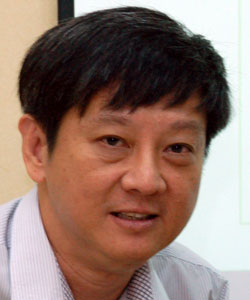
5. China contribution: Its existing 2 PRC joint ventures in Beijing and Nanjing will provide strong incremental earnings from this year.
Q&M is working on several JVs and targeting to achieve an aggregate profit of RMB 80 million from China, and to seek an IPO for the PRC business either in China or Hong Kong in 3-5 years.
6. Why pursue China business? It offers too big a growth potential to ignore. Take for example a proposed joint venture with Shanxi Meiyuan Medical Technology, which owns 2 dental hospitals, 6 clinics and 20 dental laboratories.
It employs about 130 dentists. Compare that to Q&M's 150 dentists in Singapore. If the JV materialises, Q&M would double in size.
The business potential in China is reflected in the fact that only 8% of the population in coastal cities visit dentists at least once a year. The percentage has lots of room to grow -- consider that in Singapore, the figure is 46%.
In return for selling a slice of a profitable business that they have nurtured over many years, the potential Chinese partners are offered the prospect of an IPO for their business and working with a recognised brand, among other things.
Typically, Q&M will take a minority stake in a JV -- but would seek a stake of more than 50% if the JV is in Shanghai as that is where Q&M has a team. After amalgamating all the JVs, Q&M expects to be a majority shareholder of the intended listco.
7. Significance of IFC partnership: Last year, IFC, a member of World Bank, agreed to loan US$15 million to Q&M for its China expansion. It's a strong endorsement of Q&M as the agreement came after about a year of due diligence on Q&M, its China partners and prospective partners.
With its vast resources and experience in China, IFC will be a good partner for Q&M. A reader asked: What about the risk of fraud in the target Chinese dental groups?
Dr Ng: "The people we are dealing with are professionals -- they are respectable and well-known, and have made it."
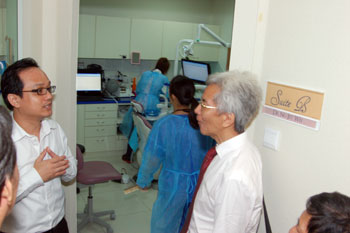
8. Fund raising: Q&M, though it has grown from 38 to 51 clinics since IPO in 2009, still had (as of end-2011) $12 million of the $20 million IPO money raised.
It needs more money to acquire stakes in China and for M&A activities in Singapore. No timeline has been announced.
9. Q&M business insights: a) To start up a clinic in the HDB estates, Q&M spends $100-200K and expects the clinic to do $1-1.25 million in revenue a year. Generally, the break-even period is 6 months to a year.
b) Q&M rents most of its outlets but will buy the property if the outlet becomes a top performer.
c) Dentists are paid on commission.
d) Q&M receives applications every week from dentists wanting to join the company. On the flip side, Q&M has not lost groups of dentists to its competitors -- because the competitors are smaller and don't have a sizeable enough patient pool to support a jump in the number of dentists.
e) 30% of Q&M dentists are foreign-trained, and include South Koreans and others who serve the expatriate and tourist markets.
f) 70% of procedures done are basic such as scaling while 30% are high-end such as root-canal treatment. Because of the higher dollar value, the high-end work derives from only 14% of procedures, which is why Q&M is stepping up its recruitment of specialists.
10. Stock valuation: While some readers opined that the Q&M historical PE (of 45X recently) is on the high side, the management pointed out that dental and medical peers trade in roughly the same PE range on various stock exchanges.
Q&M's future profit growth suggests that the prospective PE is certainly lower.
Giving an idea of the valuation that dental businesses command, Dr Ng cited a recent announced deal in China whereby a private equity fund paid US$20 m for a 40% stake in a Chinese dental group -- at a PE of 35X.
The invite to the visit was: Q&M: "Come visit us, meet our management, get to know our business... & do lunch"







Healthway made $1.8 m on $20 m revenue while Q&M did $1.1 m on $13 m of revenue.